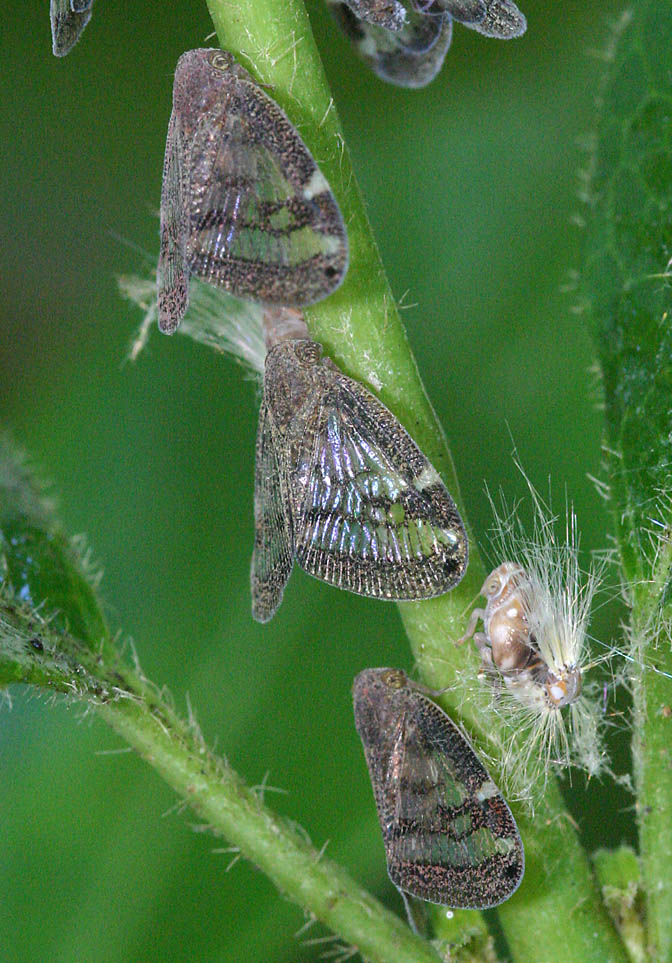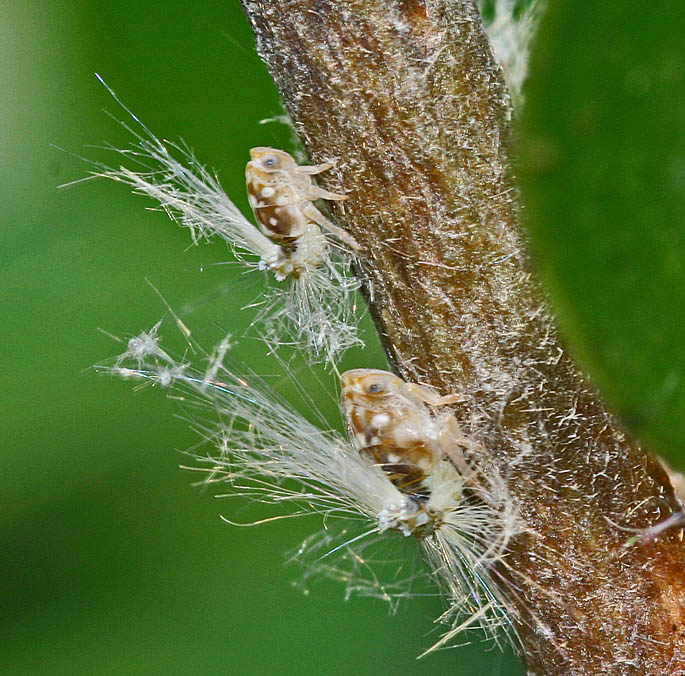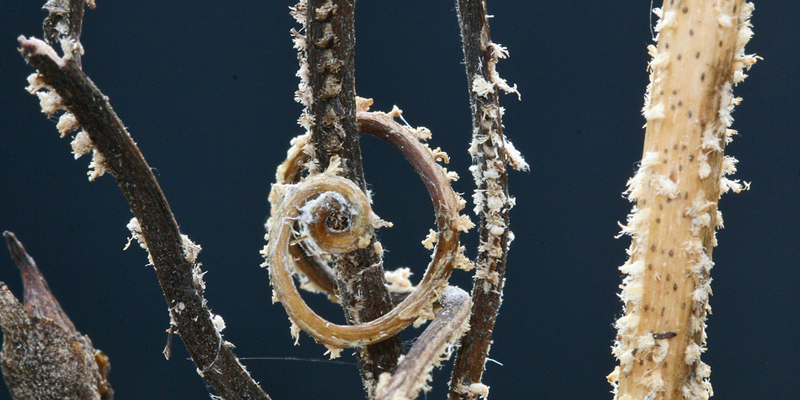Passionvine Hoppers came up in conversation a week or so ago: a nuisance for gardeners, especially in the warmer north (but more and more a pain-in-the-South as well!).
I also remember that Aucklanders often called them lacy-winged moths. Shows you that entomological knowledge has always been slow to sink in up there in the North Island.
They are certainly not moths, these critters belong to a totally different insect order: the Homoptera, or sap-sucking bugs. Yes, these are some of the insects you can legitimately call “bugs” in entomological parlance.
LIFE CYCLE:
Eggs hatch in October – the timing relates to warmth in spring.
The tiny fluffy bums (“nymphs”) suck sap from a wide variety of host plants and slowly grow bigger and bigger. They also become nimbler and can hop greater distances as they grow larger in spring.
Late in spring (December onwards) the Fluffy Bums will moult their last moult and turn into a winged adult Passionvine Hopper.

One nymph of passion vine hopper (fluffy bum) and three winged adults in summer.
They will still suck sap from your favourite plants – they will also continue excreting sticky honeydew all over the plants and leaves below.
(And as we all know, honeydew is a perfect place for sooty mould to grow – black, ugly fungal material that looks as if a miniature fire has burnt your plants).
This is also the time for mating and female Passionvine Bugs will lay eggs in the autumn. They prefer to insert the eggs in thin branches, leaving a patterned oviposition site, which keeps the eggs in good nick during the winter months
CONTROL and PREVENTION:
Keep an eye on the new fluffy bums hatching in your garden right now! Those tiny nymphs often congregate in large flocks at the ends of new growth; they are still very feeble in their movement and won’t be able to escape a cloud of fly-spray aimed at them on a wind-still morning.

Small, young nymphs
Spray these young passionvine hoppers in October with a good dose of fly-spray.
In autumn there is a second chance for control: spot the new egg-sites on thin twigs and tendrils, cut these off and burn them in the fireplace (Fried Eggs!).

Eggs laid in thin twigs and curly tendrils
LISTEN ABOVE
Take your Radio, Podcasts and Music with you










